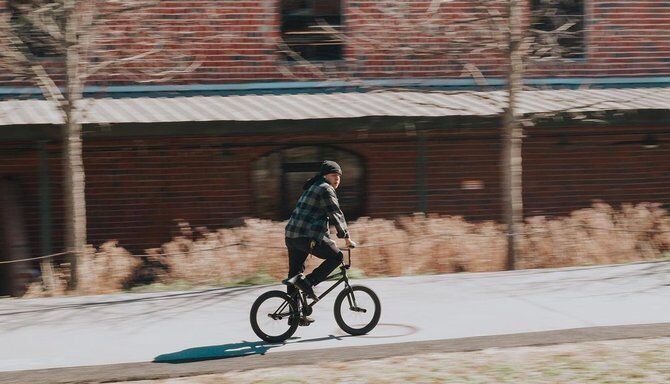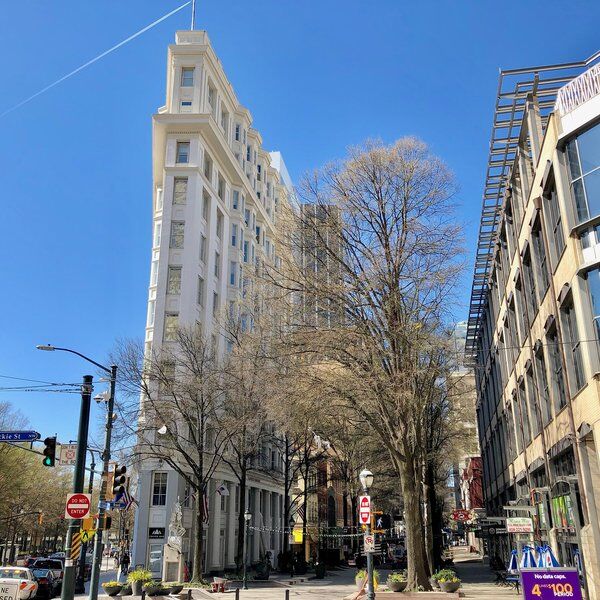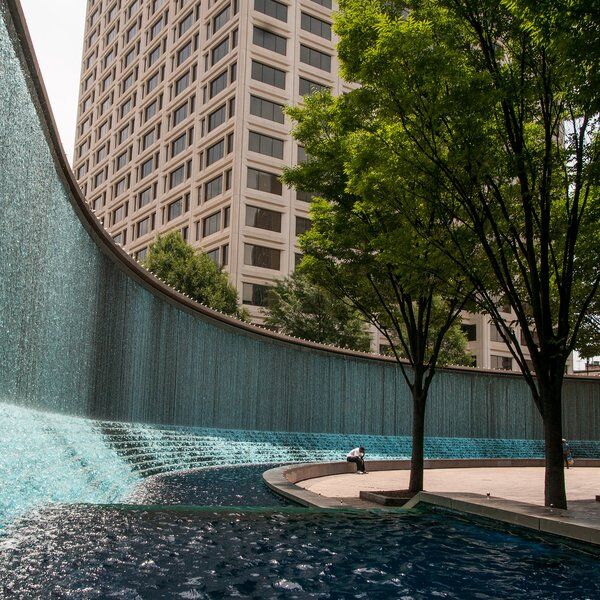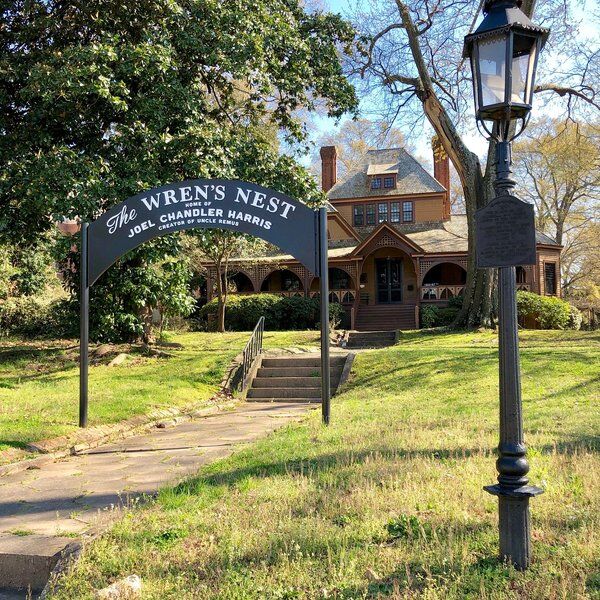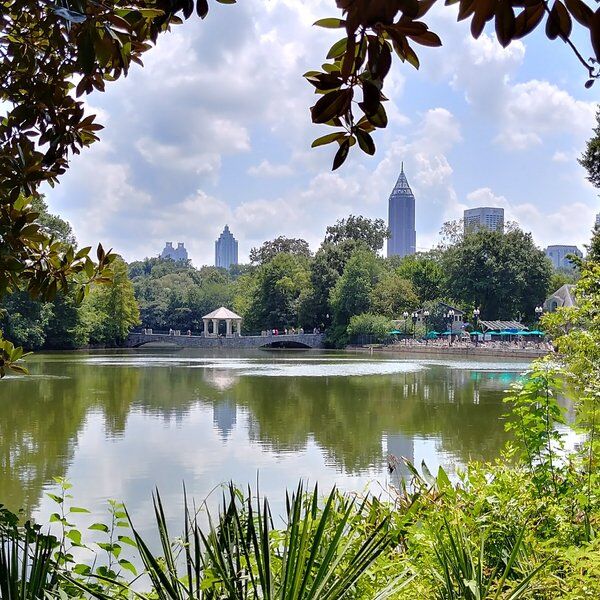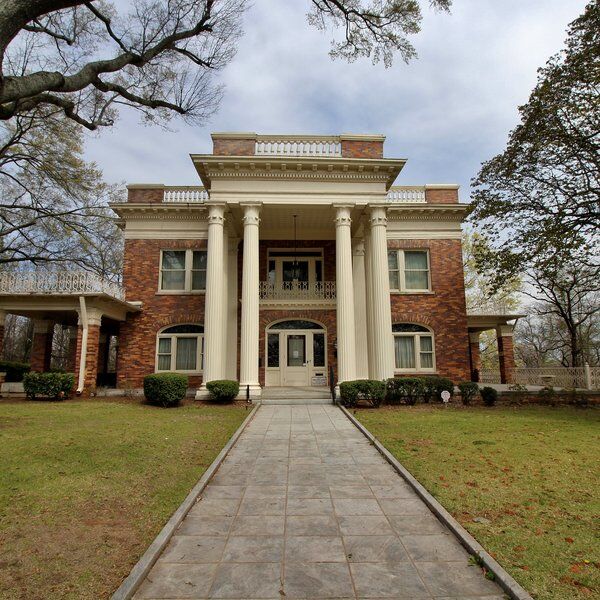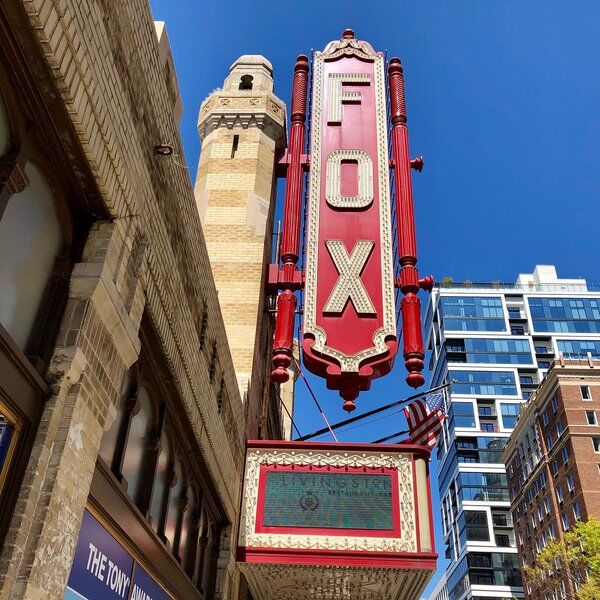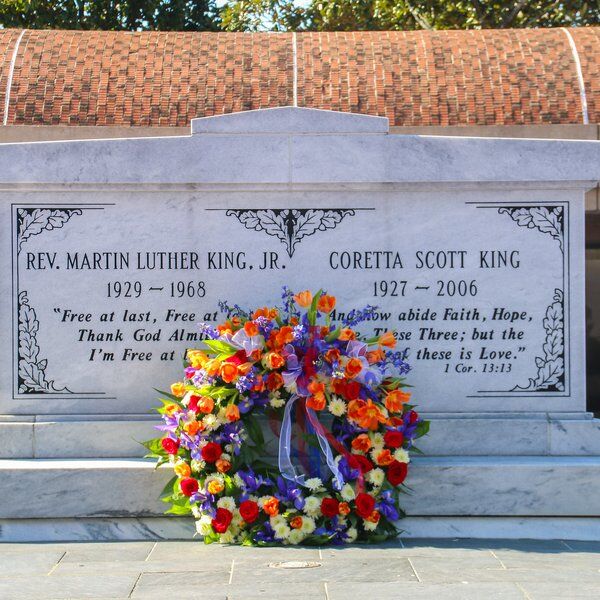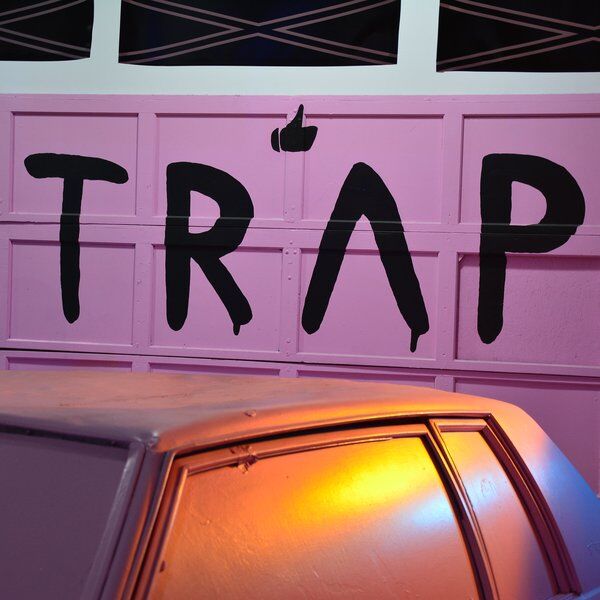
What is the Atlanta BeltLine?
The Atlanta BeltLine (when complete) will be 22 miles of open and planned trails, parks, and light rail transit that sit upon a former railway corridor looping around the heart of Atlanta, Georgia. It has been constructed with a clear mission to improve transportation, create affordable housing, showcase Atlanta’s cultural elements, and sprinkle in some healthy green space.
Another of its principal goals is to reconnect marginalised neighbourhoods and communities that were previously divided by infrastructure. Upon its predicted completion in 2030 – at an estimated cost of $4.8 billion – it will connect 45 neighbourhoods throughout the city.
Currently, the BeltLine is in varying stages of development. But there are bars, restaurants, parks, shops and more to be explored. There are also several complete trails and others, although unpaved, are hikeable.
Where did the idea for the Atlanta BeltLine come from?
The idea for the Atlanta BeltLine first originated in 1999 and was contained within a university thesis written by Georgia Tech student, Ryan Gravel. Gravel and two of his colleagues – infuriated by the lack of transportation options in Atlanta – condensed the thesis into a proposal in 2000. They then sent copies of the document to dozens of influential Atlantans.
In its early days, a city councilor Cathy Woolard, helped to promote the idea further. After gaining the attention of Atlanta's mayor Shirley Franklin and many people from the business sector, the notion grew rapidly during 2003 and 2004. By 2005, the Atlanta BeltLine Partnership was formed and in 2006 the Atlanta BeltLine, Inc. was set up. Shortly afterwards, work on the development commenced.

Where is the Atlanta BeltLine?
The BeltLine runs through many of Atlanta's most historic and culturally rich neighbourhoods, including Old Fourth Ward, Inman Park, and Poncey-Highland, and can be accessed at various points around the city. It also connects to several major parks, including Piedmont Park and the Atlanta Botanical Garden.
Impacts the BeltLine has had on Atlanta
Social Impacts
One of the most significant impacts of the Atlanta BeltLine has been its role in bringing people together. The project has established new public spaces, such as parks and trails, that encourage residents to interact with each other and build a sense of community.
By the project’s scheduled completion, Atlanta BeltLine Inc. has promised to create or preserve 5,600 units of affordable and workforce housing. Between 2006 and November 2022, 4,919 affordable homes were built within walking distance of the BeltLine.
Therefore, the BeltLine has been instrumental in the revitalization of several neighbourhoods, leading to an influx of new residents and creating more opportunities for social interaction and engagement.
Cultural Impacts
The project has provided a platform for the Southeast’s largest temporary public art installation; Art on the BeltLine. As well as other cultural events, such as the Lantern Parade, BeltLine Boil, and the BeltLine Wine Stroll. These events celebrate Atlanta's vibrant and dynamic nature and offer visitors the opportunity to explore the history of the city’s diverse communities.
The BeltLine has also been a catalyst for the development of new cultural institutions, such as the Atlanta BeltLine Center, which provides educational programming and resources to promote the project's vision and goals.
Economic Impacts
The Atlanta BeltLine has created thousands of jobs in construction, planning, and development and has helped to attract more than $8.2 billion dollars in private investment (as of the end of 2020). An estimated $670 million has been invested in the project’s delivery from 2005 to 2021, signifying a positive return on investment of over 10 to 1.
The revitalization of several neighbourhoods along its path, including the Old Fourth Ward, has allowed for a surge in new businesses, housing, and entertainment options.
Health and Wellbeing Impacts
In addition to its economic impact, the BeltLine is also helping to improve public health in Atlanta. The project has created over 1,000 acres of new parkland, providing residents with more opportunities for outdoor recreation and exercise.
The series of trails and parks has also encouraged different modes of transportation (just as its founders wished). These include biking and walking, which can lead to improved health and wellbeing for individuals and the community as a whole.
The BeltLine enhances our quality of life by really allowing my wife and I to engage with our kids on a whole different level that we can’t do if we’re in a car.
Political Impacts
The BeltLine has had a significant political impact in Atlanta, too. The project has been supported by both the public and private sectors, and has been championed as we know, by several mayors and elected officials over the years.
The project has also paved the way for a conversation concerning urban development and sustainability in Atlanta, providing a model for other cities to follow.
What is there to do at the Atlanta BeltLine?
One of the most popular attractions on the BeltLine, and the first finished section, is the Eastside Trail, stretching just over 2 miles from the tip of Piedmont Park to Reynoldstown.
The trail, funded by a combination of public and private philanthropic donations, is lined with public art installations, outdoor fitness equipment, and several dining and drinking establishments. On weekends, the trail is a busy place with lots of runners, cyclists, families, and dog walkers.
Alongside the Eastside Trail, there are also several other trails, parks, and public spaces that offer a variety of activities for visitors. Some of these include:
- Skatepark: A 15,000 square foot skatepark near the West End Trail. It can be accessed free of charge by the public.
- Historic Fourth Ward Park: This 17-acre park includes a large pond, playground, splash pad, and several areas perfect for unwinding with a picnic.
- Westside Trail: Featuring a nature preserve and several historic sites.
- Ponce City Market: Situated along the Eastside Trail this multi-use development includes restaurants, shops, and even a rooftop park.
- Atlanta BeltLine Arboretum: A collection of gardens and green spaces along the Eastside Trail that showcases Atlanta’s diverse wildlife.
- Atlanta BeltLine Center: The center is a hub for education and advocacy related to the BeltLine, with exhibitions, information, and resources.
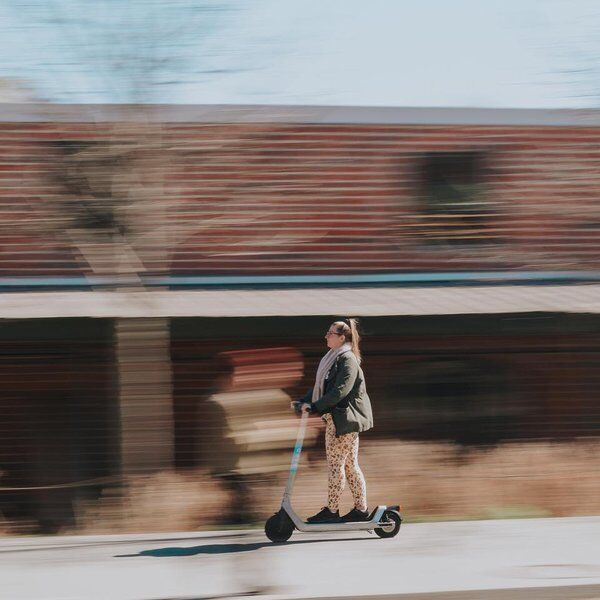
How to Stay Safe on the Atlanta BeltLine
Over the years the BeltLine has become incredibly popular to tourists and locals alike, with more than 2 million people accessing the trails every year. However, this increased popularity has also run parallel with a rise in pedestrian congestion: cyclists; skateboarders; yoga enthusiasts; runners; roller skaters; and even pub-crawlers now find themselves colliding along the popular sunbelt pathways.
According to local Atlantans, the roads are a dangerous place for pedestrians so the BeltLine should remain a safe and peaceful way to transit across the city. Here are some tips for using the trails safely:
- On foot: Be self-aware. Listen to your music, enjoy a conversation, or succumb to a daydream but keep checking your surroundings to make sure you’re not causing an issues for other trail-goers. Ensure you walk on the right hand side and no more than two breast. This means no gathering in the middle of the path for a chit-chat with passing friends.
- On a bicycle or scooter: Ring that bell and alert those infront to your passing, which should be slow and steady! Always pass by on the left hand side and if you need a breather or to change a tyre, make sure to step off the path so as not to obstruct the BeltLine for others.
- Concerning animals: Animals should be on a leash (not a retractable one that allows animals to wander into oncoming traffic) and don’t forget to pick up after them. Leave the BeltLine as you would wish to find it – nice and clean!
- And lastly, check both ways before jumping on the trail.
Our thoughts…
Overall, exploring the Atlanta BeltLine is a great way to while away the time. Check out a trail or adjacent park, or grab some grub at one of the local restaurants and see how the unique urban development is contributing to the creation of a more vibrant, healthy, and sustainable Atlanta.

